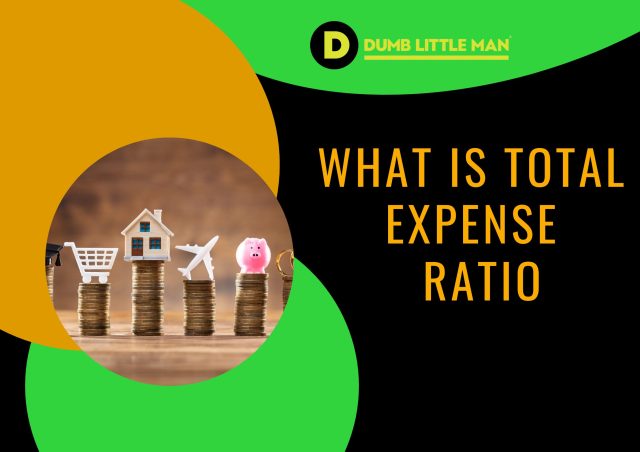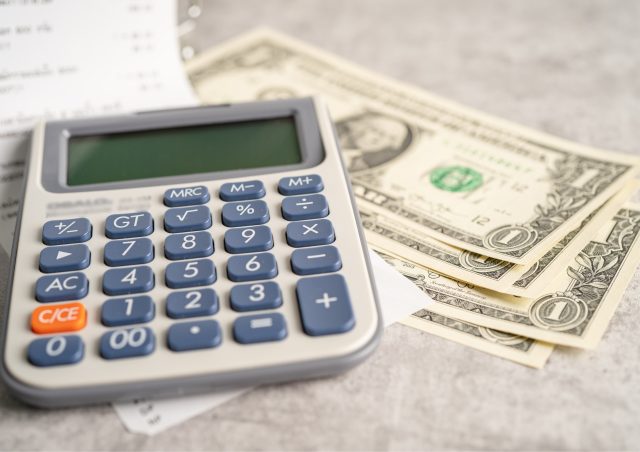What Is Total Expense Ratio – Unveiling Expert Perspectives and Strategies 2024
By Jordan Blake
January 10, 2024 • Fact checked by Dumb Little Man

The total expense ratio is among the key costs an investor has to pay attention to while managing their investments. At stake is a host of costs that vary with time and many scenarios that entail unique investment scenarios. Knowledge around expenses brings into focus one key role of management – control. And in an ideal situation, the costs of running a business have to be lower than the income for the investors to close with some profit.
One good approach to help us grasp what the total expense ratio is – is by getting insights from an expert in the field. We’ve reached out to Ezekiel Chew from Asia Forex Mentor. Ezekiel has more than 20 years as a trader. As a successful trader, Ezekiel Chew gives back to society by helping new traders. First, he shares professionally crafted blogs and vlogs for investors in general, but with a special focus on stock and forex traders.
In this post, Ezekiel will help us understand what an expense ratio is. And since our focus is to arm you with expert-level knowledge, there’s a section on how the total expense ratio works in investments. Further, readers will find a key section on the elements that comprise the expense ratios. You’ll also know the formula for calculating expense ratios. There’s a key section for helping readers distinguish between the expense ratio and the gross profit ratio.
Towards the end and after, the conclusion is the FAQ section for our expert to give feedback on some of the questions you may raise by reading through the post.
What is the Total Expense Ratio?

The Total Expense Ratio or Reimbursement Expense Ratio is a measure of all the costs of running a fund or scheme.
One core focus of the TER is to help investors have better control by having a firm analysis of the costs of running an investment scheme. And one way it helps is by making a comparison of the costs with those of peers. It also extends to the returns the peers make.
Therefore, TER helps investors choose and preferably pick on the funds with consistently low. Low TER coincides with low higher chances of significantly higher returns.
What TER indicates of an Investment?
Experts offer guidance regarding the Total Expense ratios while making investment choices. The ultimate benchmark or deciding factor as regards investment choice in light of TER stands: go for investments with the lowest possible TER. In finer detail, the lower the TER, the higher the chance to get higher corresponding returns.
And just in case you are asking – whore do I get the TER scores from? It’s part of all the fact sheets the funds share around. All you need to pay attention to is the trend- whether the figures are improving to the best or to the worst. One key aspect that investors should pay attention to is the timelines for TER. And TER is a constant occurrence, and it is a cost that the fund or the investment must incur with the lapse of time. Therefore, it comprises costs that are bound to be there – whether the fund makes a profit or loss.
Also, TER tends to have a high level of dependence on the prevalent management styles. And in most cases, the TER tends to differ between funds that are either passive or active. On a specific note, the main distinction for passive funds is the general replication of the indices you may identify – those do not require active management and also have very low overheads. One key reason for the low overhead arises since they do not require to pay for research costs in line with stock selection.
So, it’s the responsibility of an investor to raise the concerns with a financial adviser whenever TER increases consistently, yet, performance keeps dropping.
How Total Expense Ratio works

The first reason why TER matters regard this its funding source – these are costs to the investors since they are drawn from the investor's fund. So, these are costs that have a direct impact on profitability. TER reduces the amount of profits an investor may get.
Let’s take a very practical example here. Assume a fund that generates returns to the tune of 9% annually. Yet, the TER for the same fund hits 5%. We can therefore agree here that the returns reduce by the TER, which is roughly the 9% less the 5%. Meaning the net expense ratio leaves a realistic 4 % only.
In better ways, we can say that TER is a way to recognize the annual expenses of specific funds. And the expenses have a direct association with the operations of the fund in concern. In terms of expression, TER sums up all the expenses in line with the operations of a fund and culminates by expressing them in a single digit or a percentage. And the basis of the percentage is the accumulated fund itself.
By associating TER with the operations of the fund, investors are able to create a connection between the total funds, the costs for running it, and the annual timeframes. Out of the analysis, investors are therefore able to gauge the success of the underlying fund. When we get into the constituents of TER, we refer to the support elements that go into settling management costs. Plus, trading and any legal and audit fees settled for the operation of the fund.
At any time, any costs incurred in line with running the funds are attributed to TER. In case a fund is managed with highly active staff, most likely, it will incur high costs for personnel. By extension, the same happens with trading fees – where the fund manager has an obligation to pay on a per-executed trade basis. If a fund has more automated aspects in management, it may incur significantly lower operations costs and TER by extension.
Total Expense Ratio Elements

TER has three major categories of total cost or operational expenses for running mutual funds:
#1. Management Fees
Management fees are operating expenses or costs for the management or fund managers – who are the key decision-makers. The outcomes depend on the expertise of the index fund manager running the investment fund.
It’s important to hire for management positions by aligning them to the experiences and past track records of reliable results.
Managers account for the biggest fees in the portion of the entire TER.
#2. Administrative Costs
In terms of administration, the actual components of TER include fees in line with operating fees: (legal fees procedures, audit, custodian fees, marketing as well as transaction fees).
This also includes other costs of employees other than those in management.
#3. Distribution Costs
In case a mutual fund falls among the few with distribution across mutual fund units, they have to fall in as distribution cost. Yet, they comprise the TER.
Total Expense Ratio Formula

TER has a simple formula, which involves getting the two variables below:
- First is the total assets comprising the fund. These include the correct positions according to books of accounts. It tallies with reports to regulators and other significant disclosures.
- Second is the total costs – comprising the management administration/overheads and distribution costs. All costs aligned with the running of the fund should find a way into this.
Total Expense Ratio vs. Gross Expense Ratio
To clearly set records, TER is not the GER or the gross expense ratio. Many investors mistake GER for TER on most occasions – these are two separate terms.
While TER is the total estimate of costs for running a fund, GER specifically refers to the total percentage of assets used to manage the fund.
Total Expense Ratio Limitations

Several drawbacks cast TER in the shadows of doubt.
First, there’s a huge misunderstanding – the TER should not comprise costs payable once.
In light of the above, the main aim of TER is to track all the costs that play a significant role in the management of the fund. Any misunderstanding or shortcoming towards accounting for every penny in operation raises the ambiguity with the compilation of TER.
Best Forex Trading Course

Ezekiel Chew is a well-renowned figure in the Forex trading scene in Asia. He is a highly sought-after speaker and trainer, featured in numerous events and seminars. His trading methods are backed by mathematical probability and have succeeded in helping many students make 6-figures in annual profits.
He is the founder of Asia Forex Mentor, which offers several programs designed to help people make consistent profits in the Forex market. His flagship program is the One core program, a comprehensive course covering everything from basic to advanced concepts.
The program includes several modules delivered in a step-by-step format, making it easy for even beginners to follow along and start seeing results quickly. In addition, the program comes with a money-back guarantee so you can try it out with no risk.
If you're serious about successfully learning to trade Forex, Ezekiel Chew's Asia Forex Mentor program is one of the best courses available. So, what are you waiting for? Enroll yourself in this amazing course and kickstart your Forex trading journey today.
| RECOMMENDED TRADING COURSE | REVIEW | VISIT |
|---|---|---|
 | #1 Forex, Crypto and Stocks trading course. Ranked most comprehensive by Investopedia and Best by Benzinga. Free to Try! |  |
4 Best Forex Brokers
| Broker | Best For | More Details |
|---|---|---|
 | Advanced Non US Traders Read Review | securely through Avatrade website |
Multi Asset Trading Platform Read Review | securely through Roboforex website | |
Professional Traders | securely through FXchoice website | |
 | Copy Traders Read Review | securely through FXTM website |
Conclusion: Total Expense Ratio
In conclusion, understanding the concept of Total Expense Ratio (TER) is crucial for investors seeking to make informed decisions about their investment choices. The TER serves as a valuable tool in evaluating the overall cost associated with a particular investment fund, including management fees, administrative expenses, and other operational costs. By considering the TER, investors can compare different funds and determine the impact of expenses on their potential returns.
Moreover, a lower TER does not guarantee superior performance, but it does indicate that a higher proportion of investors' funds are being allocated towards actual investments rather than expenses. It is essential for investors to carefully assess the TER alongside other factors such as historical performance, risk levels, and investment objectives.
Ultimately, a comprehensive evaluation of an investment's TER will empower investors to make more informed decisions, align their investments with their financial goals, and enhance their potential for long-term success in the dynamic world of finance.
Total Expense Ratio in a Mutual Fund FAQs
What is a good Total Expense Ratio?
Experts say a good TER ratio for actively managed funds should be 1.5 % but not more than 5% annually.
How do you calculate the Total Expense Ratio?
To calculate TER, divide all the costs in a year by the total of assets forming the find. It’s expressed as a percentage.
What is the Total Expense Ratio ETF?
The expense ratio comprises all costs – inclusive of management fees charged by an ETF or Exchange Traded Fund.
Jordan Blake
Jordan Blake is a cultural commentator and trending news writer with a flair for connecting viral moments to the bigger social picture. With a background in journalism and media studies, Jordan writes timely, thought-provoking content on everything from internet challenges and influencer scandals to viral activism and Gen Z trends. His tone is witty, observant, and sharp—cutting through the noise to bring readers the “why” behind the “what.” Jordan’s stories often go deeper than headlines, drawing links to pop culture, identity, and digital behavior. He’s contributed to online media hubs and social commentary blogs and occasionally moderates online panels on media literacy. When he’s not chasing the next big trend, Jordan is probably making memes or deep-diving into Reddit threads. He believes today’s trends are tomorrow’s cultural history—and loves helping readers make sense of it all.













